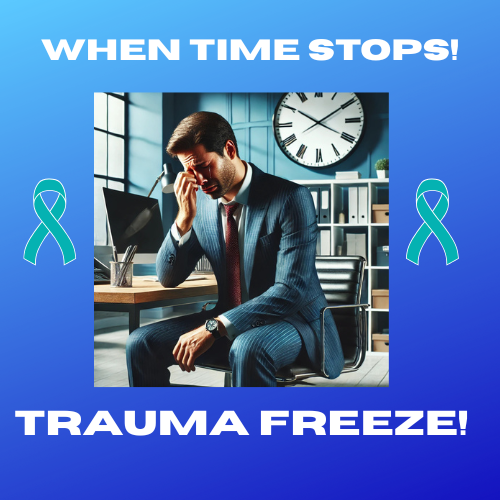C-PTSD and PTSD in Males and Females as a Result of Dismissive Avoidant Attachment.
A Complex Interplay
It starts quietly.
One day you wake up and realize you’ve been holding your breath for years, tiptoeing through conversations, editing your emotions before they escape your lips, rehearsing how to sound “less needy.” You have been loving someone who perceives connection as a threat, and in the process, you have gradually lost sight of your true self.
Leaving wasn’t just about packing a bag; it was about piecing together a life they never fully let you live.
The Untold Weight
I’ve sat across from countless men and women who tell the same story in different words.
They thought they could love someone into safety, someone whose dismissive avoidant attachment made them shut down rather than lean in. At first, the distance felt like a form of independence. However, as time passed, it transformed into a barren emotional landscape.
Add the grinding symptoms of PTSD or C-PTSD, nightmares, hypervigilance, and emotional exhaustion, and the result is a relationship that quietly bleeds the soul.
“It was like living in a glass box. You can see each other, but there’s no door.”
The Complex Interplay Between Avoidance and Trauma
Early experiences of emotional neglect or inconsistency shape dismissive avoidant attachment. It’s a survival strategy: keep distance, avoid vulnerability, and stay in control.
But when PTSD or C-PTSD enters the picture, this attachment style becomes a fortress with the drawbridge permanently raised. The symptoms of the trauma, such as hyperarousal, intrusive thoughts, and emotional dysregulation, combine with the avoidant's habits, leading to a severe disconnection.
Key Dynamics Include:
Emotional Numbing and Detachment: Trauma turns the lock on feelings that were already guarded.
Avoidance Behaviors Intensify: Social withdrawal, avoiding triggers, and steering clear of emotional intimacy.
Trust and Intimacy Erode: Vulnerability becomes dangerous terrain.
Heightened Anxiety and Anger: PTSD fuels irritability, while avoidance freezes connection.
Communication Breakdowns: Silence becomes the default language.
The Aftermath for the Partner
Those on the receiving end often leave the relationship carrying invisible wounds. They’ve been conditioned to shrink their needs, second-guess their reality, and suppress their emotions.
Over time, such behavior erodes self-worth and leaves deep imprints of trauma, often mirroring the symptoms of PTSD themselves.
The Six-Step Recovery Method
Healing requires both understanding and action. Over the years, I’ve guided survivors through a method that restores stability and self-worth:
1. Recognize the Emotional Shift
Pause when your body tenses, your heart races, or your thoughts spiral. Name the trigger. Developing awareness is the primary defense mechanism.
2. Use the 8 Healing Affirmations
Repeat them daily, and especially when triggered, to rewire the subconscious.
Example: I am safe. I am worthy of love that is freely given.
3. Breathe to Release Cortisol
Slow, diaphragmatic breathing, inhale for 4, hold for 4, exhale for 6, calms your nervous system.
4. Ground Yourself in the Present
Engage your senses: 5 things you can see, 4 you can touch, and 3 you can hear. Step outside barefoot if possible.
5. Redirect Your Energy
Shift focus with music, art, movement, or anything that breaks the emotional loop.
6. Call Your Anchor Person
One trusted contact who listens without judgment and helps you find the center again.
Reclaiming Your Life
Healing is not about fixing the avoidant; it’s about reclaiming you.
You are not too much. You are not broken.
Your capacity for connection is not a flaw; it’s a gift.
When you combine awareness, consistent healing practices, and safe relationships, you can step out of the emotional desert and into a life where love feels safe and your breath comes easily again.
Call to Action for Readers
Please consider sharing this article with someone who may benefit from knowing they are not alone.
Subscribe for more trauma recovery tools and personal growth strategies.
Comment below: Which of the six steps could you start practicing today?
© 2025 www.soundthetrumpet.org









